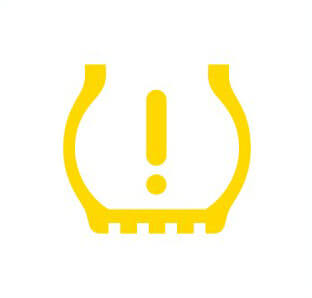TIre pressure light on when temperature drops
Tire pressure light on in cold weather — How to turn off the light

Got a tire pressure light on? It comes on when your tire is 25% or more below the recommended pressure for your vehicle.
There is a direct relationship between outside temperature and tire pressure. As a general rule, tire pressure changes 1-psi for every 10° change drop in outside temperature. So if outside air temperature decreases 30° from your last tire pressure adjustment, expect tire pressure to drop about 3 psi.
However, the change is not linear. In extremely cold weather, the rate of pressure drop can be greater than 1-psi for every 10°F change in outside temperature.
So, if you last checked your tire pressure when it was 66°F and a cold snap rolled it and it’s now -11°F, your tires could be 8-psi low, even though it’s only a 55°F drop in temperature.
The opposite is true also; for every 10° increase in outside temperature, tire pressure rises by 1-psi. That’s why it’s important to check tire pressure monthly and top off or reduce pressure to match the recommended pressure on the label in the driver’s door area.
That’s why it’ so common to see a tire pressure light on when cold weather rolls in.
Why carmakers tell you to check your tires when they’re cold
The recommended cold tire pressure is based on a tire that hasn’t been driven for at least 3 hours. That’s the definition of cold. Once you start driving, your tire pressure will go up by 2 to 4-psi. However, tire pressure can rise even more in hot summer weather. If you adjust your tire pressure down to the recommended cold pressure after you’ve been driving, they’ll actually be underinflated. Why? Because the cold tire pressure recommendations have already anticipated the pressure increase caused by driving.
Adjust pressure when cold weather arrives
Tire pressure should be checked and adjusted when your tires are cold (not driven for at least 3-hours). Adjust your tire pressure to the recommended pressure listed on the decal inside the driver’s door or pillar.
You will have to add air to your tires in winter and release air in Spring as the outside temperature rises.
A blinking TPMS icon means there’s a problem
When your tire pressure is low, the tire pressure icon will illuminate steady. However, a flashing tire pressure icon (TPMS) means there’s a problem with a pressure sensor or the TPMS receiver. Get that checked out by a tire shop.
© 2012 Rick Muscoplat
Posted on by Rick Muscoplat